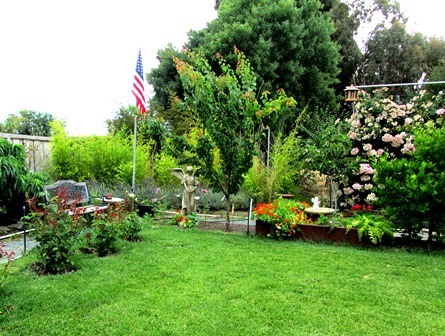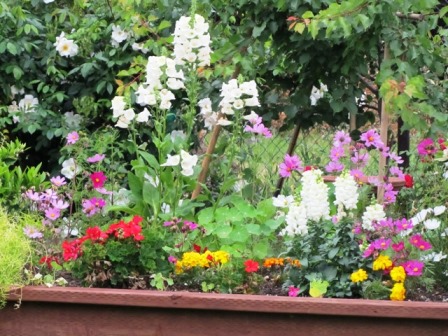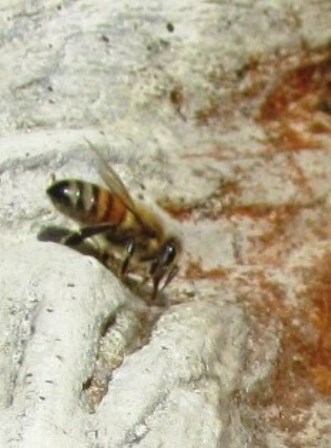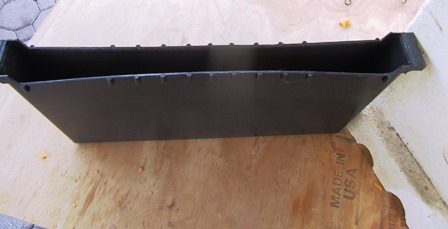Archive for September, 2015
Killer Bees Found for the First Time in the East Bay
Global warming might be responsible for our extreme summer heat and the multi-year drought in the Bay Area. It might also explain the presence of killer bees, too. For the first time, U.C. San Diego scientists tracking the Africanized honeybees have found them here in the East Bay city of Lafayette.
The Oakland Tribune suggests the Africanized honeybees are docile unless their hive is threatened. Otherwise, the Africanized or “killer bees” are of similar temperament and have a similar sting as the European honeybees. See, http://www.insidebayarea.com/breaking-news/ci_28892198/killer-bees-detected-lafayette-bay-area-first-time?source=rss
The Africanized bees were bred with European honeybees in Brazil in 1956 to produce a honeybee better suited to Brazil’s climate. The bees escaped their containment, bred with European bees and spread.
The Africanized bees breeding with European honeybees quite possibly means the resulting bees may have a stronger resistance to one of diseases believed responsible for European bee die-offs and colony collapse disorder.
Widely published stories today tell us that the killer bees have been detected in Briones Regional Park in Lafayette, only ten miles from where I keep bees on the Henny Penny Farmette.
Researchers from U. C. San Diego have tracked the bees throughout the state. Likely more than one colony has been established here. But whether or not the bees stay remains to be seen. See, http://www.sfgate.com/bayarea/article/Killer-bees-found-in-the-Bay-Area-for-the-6535892.php
Bees prefer warmer, drier habitats, so they may not stick around. The strong El Nino forecast for this winter could bring much needed rain to the Bay Area and plunging temperatures to the freezing mark.
Africanized bees swarm relentlessly when they perceive a threat. If you are out walking and notice bees foraging on wildflowers, become vigilant. They may not bother you. But do observed them. Don’t swat at them, it will antagonize the bees.
If they start moving toward you, run to at least 100 yards away. Retreat indoors if possible. Don’t think you can escape by jumping into a lake or pool. Researchers say the killer bees have been known to wait above the water.
To read an in-depth analysis of the Africanized honeybee, see http://www.library.ca.gov/crb/99/notes/v6n2.pdf.
To curl up with a cozy mystery that features gentle honeybees, check out my newest novel, A BEELINE TO MURDER: http://www.amazon.com/s/ref=nb_sb_noss?url=search-alias%3Dstripbooks&field-keywords=Meera+Lester&x=0&y=0
Put Your Eyes and Nose on Your Hives
As a beekeepeer, I sniff my hives as well as visually examine them for signs of hive health. A healthy hive smells pleasant but an unhealthy one can emit a foul odor.
This time of year, honeybee hives should be checked for populations of mites. Especially destructive is the Varroa destructor mite and the tracheal mite. Mite populations can rapidly increase and decimate a hive.
The Varroa destructor mites are true “blood suckers” and feed on adult bees (especially drones or males) and baby bee larvae.
I inspect for deformed bees (like wings missing), red or brown spots on bee larvae, or pinpoint-size mites (looking like ticks) clinging behind a bee’s head or between its abdominal sections. It’s best to treat immediately when the signs are clear that there’s a problem in the hive. If it smells foul, there could be an infection.
In fact, beekeepers need to stay vigilant for all kinds of illnesses that can harm their hives: mites, bacterial infections, and/or even predators placing hive’s health at risk.
The scent of honey and the hum of bees busily working inside the hives can be reassuring to a beekeeper, but doesn’t eliminate the need for regular inspections, especially in autumn. You want your hives to be healthy enough to make it through whatever conditions winter brings.
For bee tips, recipes, and a killer cozy mystery, check out my newest offering: A BEELINE TO MURDER. See, http://tinyurl.com/ptegs9g
Why Seed Saving Matters
Harvesting seed from my favorite flowers and vegetables has become of ritual for me. Basically, the plants do the work. I just pick the dried pods or seed heads, make sure they have an optimal period of time and the right environment to continue drying, and then store and/or share them.

An heirloom rose, a raised box of open-pollinated vegetables or heirloom herbs, or a bed of flowers are easily integrated into this landscape to create a peaceful garden
With access to so many seed sources online and in local nurseries, some might wonder why I would bother collecting and saving seeds from plants I grow. The reasons are simple:
* Many open-pollinated heirloom varieties that I grow once were also grown in gardens generations before my time.
* It’s gratifying to know that through the plants we grow (without pesticides or altered through genetic manipulation), we can have pure and safe food that we grow ourselves.
* Crop diversity can only continue if gardeners and growers are saving seeds of diverse crop varieties.
* Harvesting seeds from what we grow completes the cycle of nature that takes place each year in our gardens.
According to Heirloom Gardener magazine, “Roughly 90 percent of the varieties that existed at the beginning of the 20th Century are extinct.” (Winter 2013-2014) That’s certainly a concern. We can’t bring back those varieties, but we can work together to try to stop further extinctions.
Passing on a garden is a great gift to the next generation. Passing on seeds is equally laudable. Saving seeds matters . . . for all of us who believe in preserving plant diversity.
To Feed or Not to Feed the Bees?
Mid-September is a time when beekeepers check their hives and consider the prudence of harvesting more honey or leaving it as well as whether or not to feed the bees. Honeybees, like many living creatures on our planet, need food and water to survive.
My wise beekeeper neighbor tells me that the hive needs to have sixty pounds of honey to make it through winter. He’s feeding his bees now a mixture of sugar and water.
The sugar-water inserts are black plastic holders that get inserted right into the hive in place of a frame. They are rigid enough to hold the sugar-water but pliant enough to swell outward, so conventional wooden frames of honey and wax help them stay in place. The downside is that bees can drown in these feeders. And if the beekeeper lets them go empty, the enterprising bees will just build comb and honey inside them.
There are several kinds of feeders–all with benefits and also drawbacks. For more information on feeders, see: http://www.honeybeesuite.com/what-type-of-honey-bee-feeder-is-best/
Last year, I didn’t take honey in the fall. I wanted to ensure the bees had what they needed to survive after they’d been through yet another summer of drought. There aren’t a lot of pollen-rich flowers to be found now. However, star-thistle still dots dry hillsides of Contra Costa County (where I live) and particular eucalyptus species that the bees like are blooming now.
I’m hopeful that this will be the last year of drought for a while. Weather forecasters say we have a strong El Nino that’s formed and will likely bring rain during our rainy season (November through April). That will be good news for the bees and those of us who love to plant flowers in our gardens to attract pollinators. But until the wet stuff starts coming down and new pollen sources are abundant, we beekeepers need to keep a close watch on our industrious little honeybees.
Growing and Sharing Farmette Figs
It’s that time of year when our fig trees reward us with a second crop of sweet, juicy fruit, best eaten right from the tree.
We aren’t the only ones who love to eat figs. The birds and raccoons are leaving telltale marks that they’re helping us devour this sweet fruit. And it’s no wonder.
Figs are a nutrient-rich food with antioxidant properties. They contain magnesium, vitamin B6, fiber, and beneficial amounts of calcium and iron.
We grow a couple of varieties of figs on the farmette–a White Genoa and Brown Turkey. Our neighbors also have towering fig tree with a canopy that reaches over the neighbor’s house. The tree is loaded now with baseball-size, dark purple fruit. I believe it’s a Black Mission fig, introduced into California by Father Junipero Serra who planted them in 1769 at the San Diego mission.
Our Brown Turkey fig produces a crop twice each year. The first crop, known as the breba grows on last season’s wood. The second, and more abundant crop, grows on new wood.The fig has rose-colored flesh inside a brownish-purple skin that tends to crack open with the fig is overripe.
The White Genoa is self-fruitful and has yellow-green skin with strawberry-colored pulp. The taste is mild and sweet and can be enjoyed as fresh fruit or paired with tangy goat cheese. The tree bears two crops each year and benefits from a vigorous pruning in the autumn after the figs are harvested.
Both figs will lose their leaves, leaving only their bark color and scaffolding as winter interest in the garden. The White Genoa’s bark is light gray whereas the Brown Turkey has a darker shade of grayish-brown bark.
These trees can be grown in containers and kept to about six feet tall for people who don’t have a lot of space for a tree that can otherwise reach 15 to 20 feet.
Figs aren’t fussy about soil, but won’t tolerate excessive water. They like the sun and are pretty hardy here in Northern California. Many figs are self-fruitful, but keeping bees means I have pollinators to help the fig crops along.
Collecting and Storing Sunflower Seeds for Next Year’s Garden
Drying heads of sunflowers and storing the seeds is easy. If your sunflowers have dry heads, ranging in size from saucers to large dinner plates, and they have turned brown and most of the petals have fallen off, the seeds are ready for harvesting.
Simply place a paper bag over the drying head and band it or tie with string to keep the birds and squirrels from foraging. Trust me, they’ll eat all your seeds if you permit it. The bag keeps the seed from dropping onto the ground to be foraged by wildlife or to generate new plants.
I like to the cut off the head, leaving eight or so inches of stem on it. This way, there is stem to tie and hang so that the head is positioned upside down in a bag. This position can facilitate the drying and captures all the seed while hanging in a drying shed. Retain this bag of seeds for replanting. The seeds are how the sunflower reproduces itself. Sunflower heads can hold thousands of seeds, depending on the size.
A word of caution here: don’t harvest the seeds and leave them drying in a tray in your shed the way I did. That will attract rodents. A coffee can with a plastic lid works great for storing sunflower seeds.
The best seeds for snacking are the gray and white striped sunflowers. There are other types of seed–for example, a black one and grayish-white seed, but the striped seeds are delicious. After you chew open the hull and spit it out, there’s a lovely seed inside it that tastes great and is nutritious.
Gluten-Free Granola Recipe in GRAND Magazine
Months ago, I played around with some gluten-free recipes after a family member was diagnosed as having a gluten intolerance. Today, the Sept/Oct issue of GRAND magazine, edited by my friend and writing colleague Susan Reynolds, comes out with my recipe for homemade gluten-free granola.
If you have a family member with gluten intolerance, give this granola a try. It’s great as a breakfast food but also as a snack. The best part about making homemade granola is that you can add to it all the nutritious items that YOU love.
Another benefit is that you’ll be saving money. If you love granola like I do, you know what the good stuff costs.
This granola can be made in small quantities, but you won’t want to because it doesn’t stay around too long. My advice is to make a few batches and store them in airtight containers. I like to eat it with lactose-free milk, but it also tastes great with almond milk as well. Enjoy.
Here’s the GRAND magazine link to the recipe: http://www.nxtbook.com/nxtbooks/grand/20150910_v3/index.php#/17
 Facebook
Facebook Goodreads
Goodreads LinkedIn
LinkedIn Meera Lester
Meera Lester Twitter
Twitter













